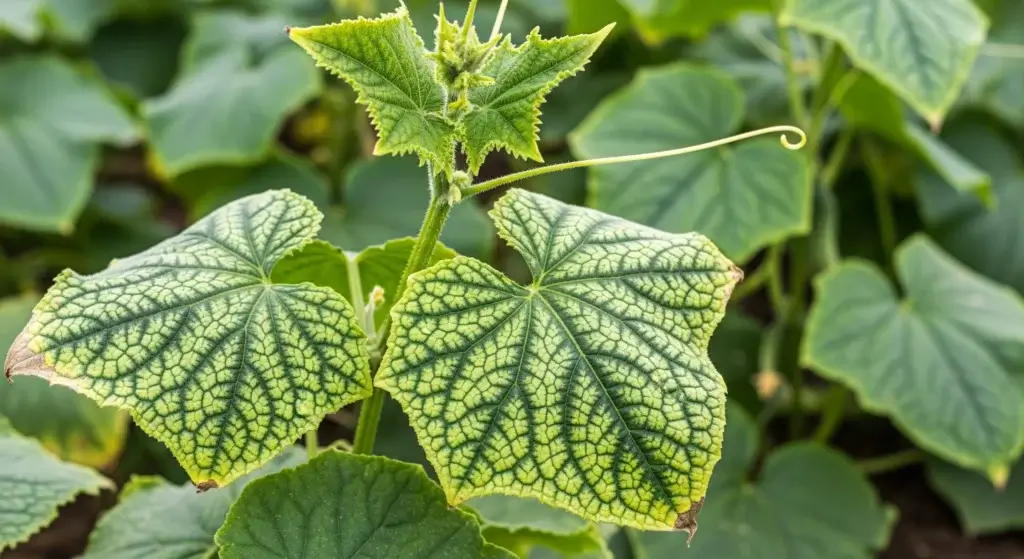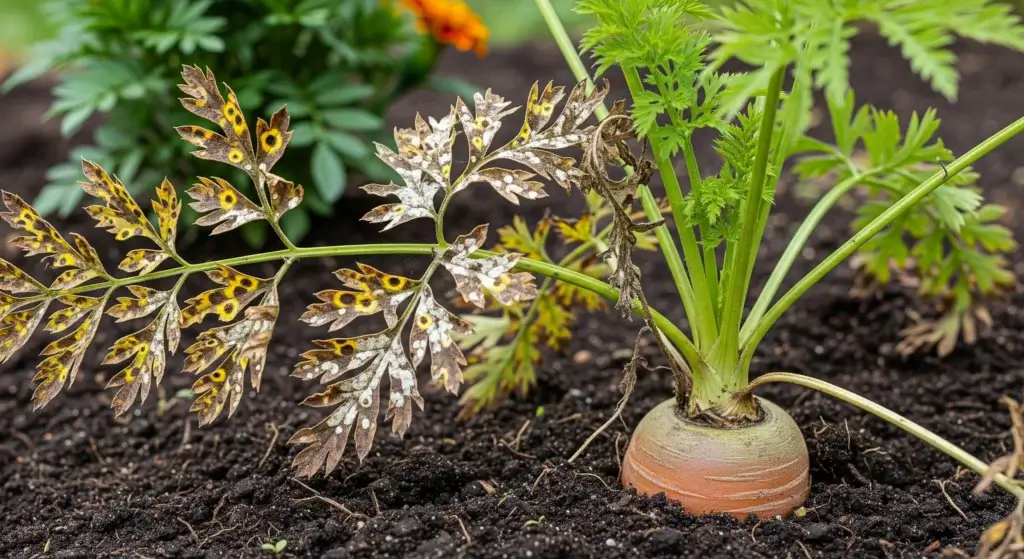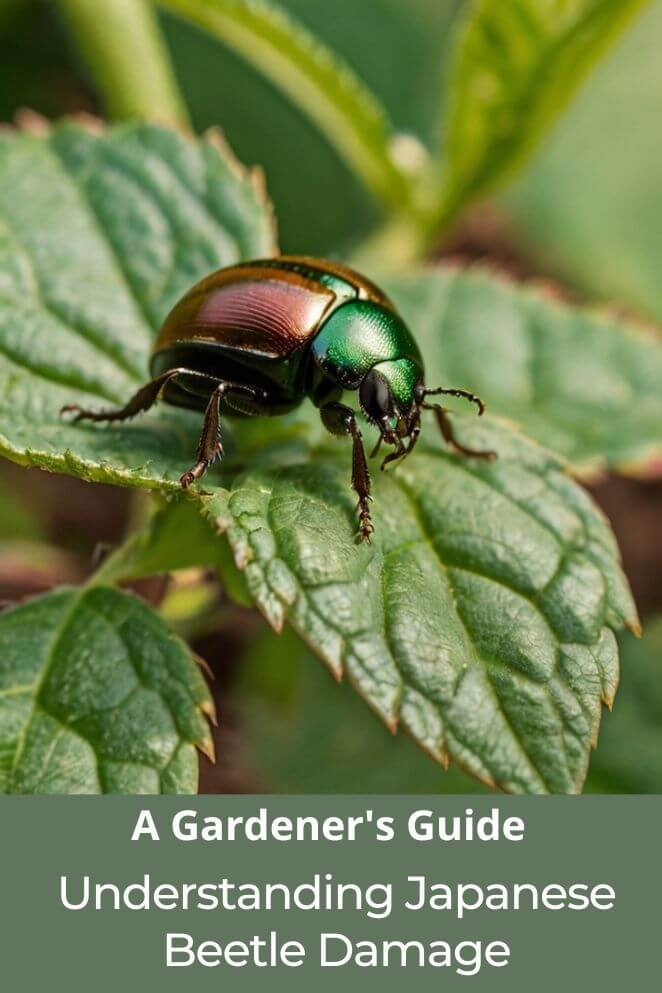
Japanese beetles may be small, but they can create significant challenges for gardeners.
These shiny, copper-colored pests can cause serious damage to plants, shrubs, and even trees.
It’s important to understand how they affect your garden and to learn effective ways to prevent and manage an infestation.
By doing so, you can keep your landscape healthy and thriving.
What are Japanese Beetles?
Japanese beetles (Popillia japonica) are small, metallic-colored insects that were first introduced to the United States in the early 1900s from Japan.
Since then, they have become a major garden pest in North America.
Adult beetles are about 0.5 inches long, with a copper-colored back and a green metallic head.
Although they look harmless, Japanese beetles are notorious for their appetite and ability to destroy foliage in large numbers.
The beetles’ lifecycle begins as eggs laid in the soil, which hatch into larvae (grubs).
These grubs spend most of their time underground, feeding on grass roots and other plants during the fall and spring before developing into adult beetles by early summer.
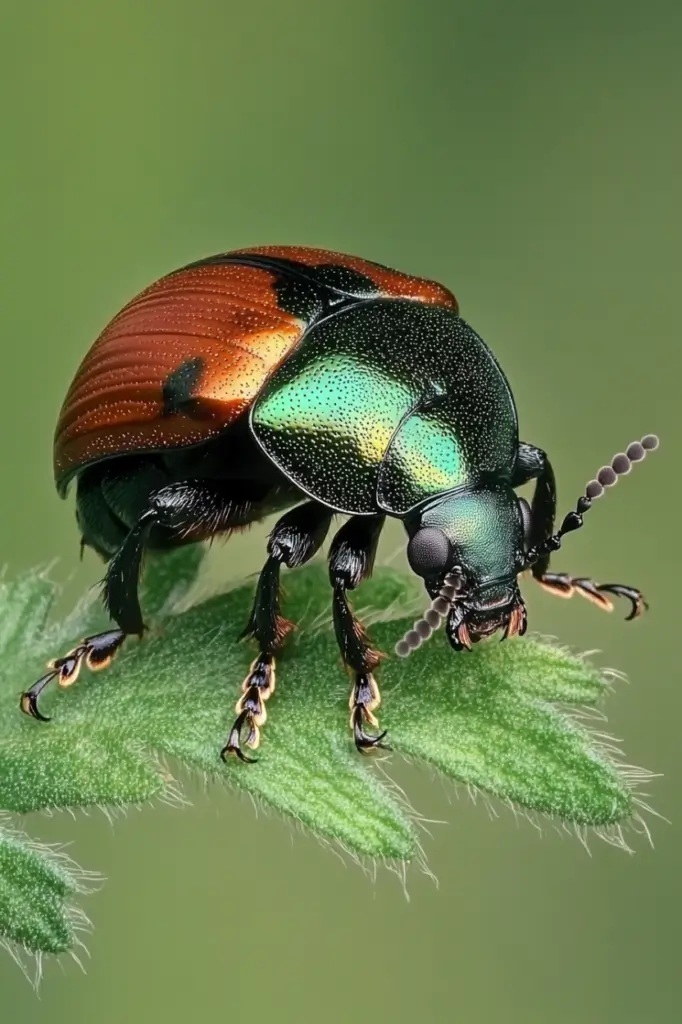
The Damage They Inflict
Japanese beetles are notorious for the harm they inflict on plants at both their larval and adult stages.
Here’s a detailed look at how these pests can damage your garden and lawn:
Larvae damage (grubs)
- Feeding on grass roots: Japanese beetle larvae, known as grubs, feed on the roots of grass. This can lead to serious damage to lawns, causing brown patches that eventually die off.
- Increased vulnerability: Damaged lawns become more susceptible to drought conditions and weed invasions, making them harder to maintain.
Adult beetle damage
- Feeding habits: Adult Japanese beetles feed on a wide range of plants—over 300 species, including popular ones like roses, fruit trees, beans, and grapevines.
- Skeletonizing leaves: They consume leaf tissue, leaving behind a distinct “skeletonized” appearance, where only the veins of the leaves remain.
- Impact on plant health: By damaging the foliage, the beetles hinder the plants’ ability to photosynthesize effectively, which can stunt their overall growth and vitality.
Economic impact
According to research published in The Journal of Integrated Pest Management, Japanese beetle infestations cause an estimated $450 million in damage to the plant and lawn industries in the U.S. each year.
This highlights the substantial economic impact of these pests.
Increased vulnerability to other issues
The weakening of plants due to Japanese beetle feeding can make them more vulnerable to other diseases and pests, exacerbating the damage and creating a cycle of plant stress.
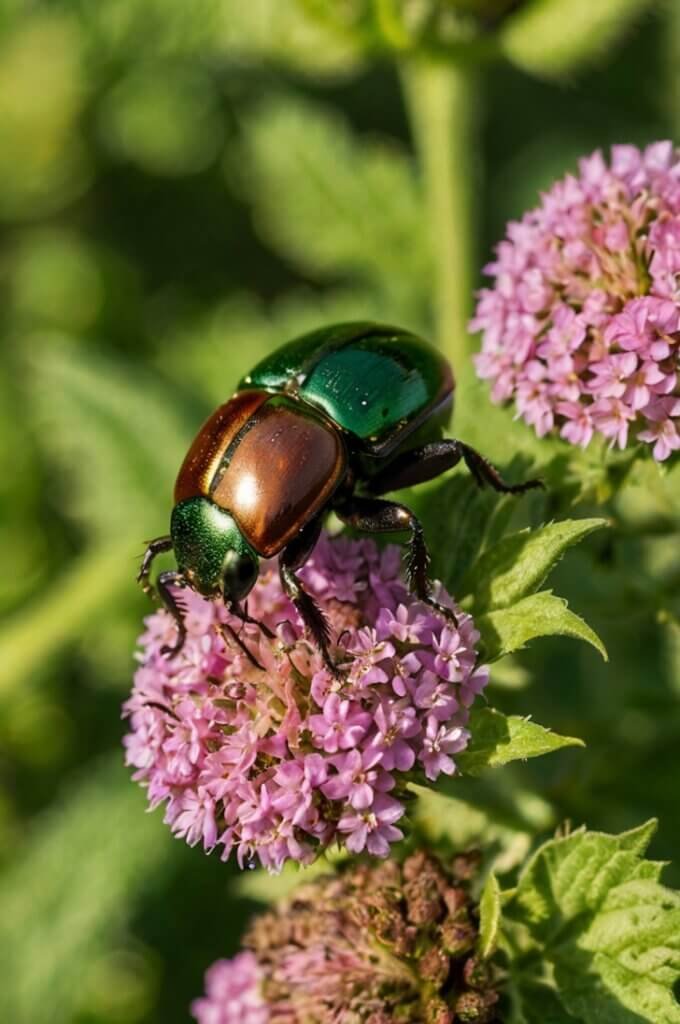
Identifying an Infestation
Identifying a Japanese beetle infestation early is key to preventing serious damage to your garden.
Here are some signs to look out for:
Skeletonized leaves
One of the most noticeable signs of a Japanese beetle infestation is the “lace-like” appearance of leaves.
This happens when the beetles eat the tissue between the veins, leaving behind a web of veins.
Brown patches in lawns
If you see brown, dead spots in your lawn, this could be a sign of grubs feeding on the roots of the grass.
These grubs are the larvae of Japanese beetles, and they can cause significant damage to your lawn.
Visible beetles
Japanese beetles are active during the day and usually gather in groups.
You’ll often find them on the upper parts of plants, particularly in warm, sunny areas where they enjoy feeding.
Increased bird and wildlife activity
An increase in birds, skunks, or raccoons in your yard may indicate a beetle problem.
These animals are attracted to the grubs in the soil, and their presence can be a sign that you have a beetle infestation.
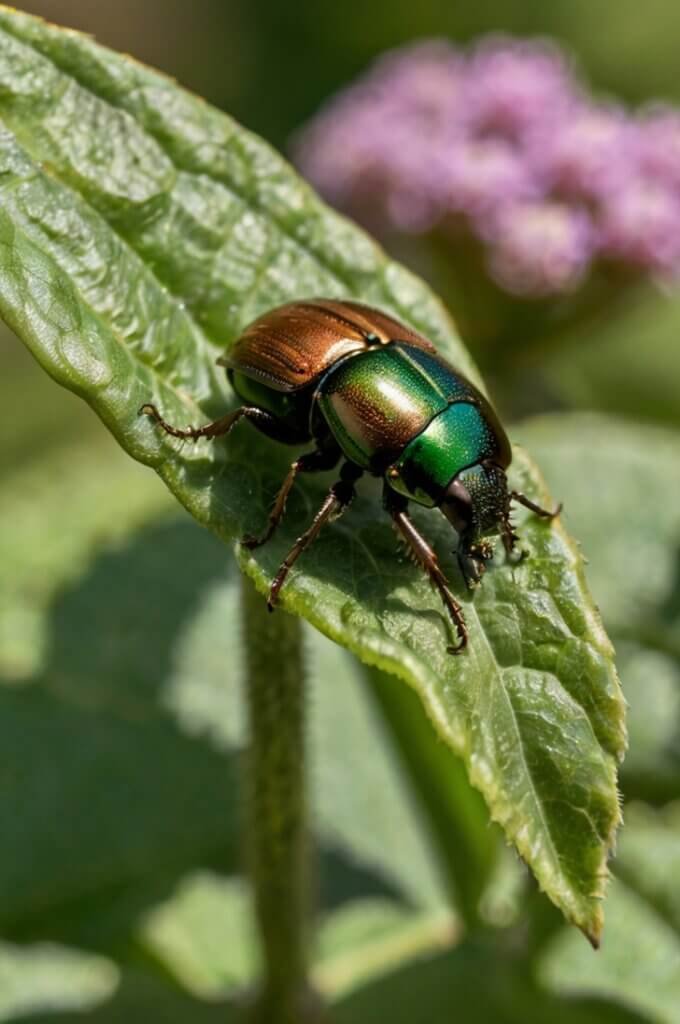
Control and Prevention Methods
To tackle a Japanese beetle infestation, there are both cultural and chemical control methods that can be used.
Here’s an overview of the most effective options:
Cultural control
Cultural methods are often the first line of defense against Japanese beetles, focusing on natural, environmentally-friendly approaches.
Handpicking beetles
Handpicking beetles is one of the simplest and most effective methods for smaller infestations.
Since the beetles are relatively easy to spot, use gloves and pick them off plants, dropping them into a bucket of soapy water to kill them.
Research in Environmental Entomology suggests that handpicking can reduce beetle populations by 30% or more when done regularly.
Trapping
Japanese beetle traps can be effective but should be used with caution.
These traps release a pheromone that attracts the beetles.
However, studies show that traps can attract more beetles than they catch, potentially worsening the infestation if not placed far from targeted plants.
Place traps at least 50 feet away from your garden to avoid drawing beetles closer to the plants you want to protect.
Beneficial nematodes
Beneficial nematodes, like Heterorhabditis bacteriophora, are microscopic worms that kill beetle grubs in the soil.
Once introduced, these nematodes enter the grubs and release bacteria that kill them within a few days.
According to Applied Soil Ecology, beneficial nematodes can reduce grub populations by up to 80% in treated areas.
Chemical control
For larger infestations, chemical methods may be necessary.
Always follow instructions carefully and use chemical treatments as a last resort to avoid harming beneficial insects and the surrounding environment.
Insecticidal soaps
Insecticidal soaps are a less toxic option for controlling beetles on smaller plants.
These soaps can be sprayed directly on beetles, killing them by disrupting their cell membranes.
They’re effective on contact but do not have long-lasting effects, so repeated applications may be necessary.
Systemic insecticides
Systemic insecticides, such as imidacloprid, are absorbed by plants and kill beetles when they feed on treated leaves.
These insecticides are effective but can harm beneficial insects like bees, so they should be used with caution and only on plants that aren’t attractive to pollinators.
Natural predators
Birds like starlings and mammals such as skunks are natural predators of Japanese beetle grubs.
Encouraging these animals to visit your garden by providing food and water sources can help naturally control grub populations.
While this may not eliminate the infestation, it can help reduce the numbers over time.
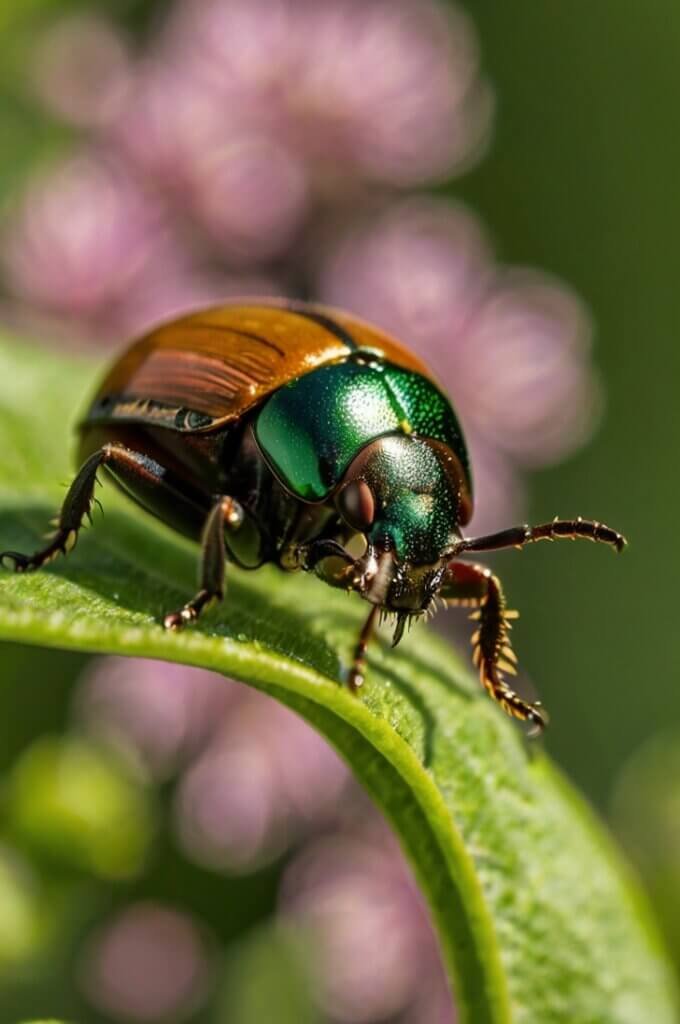
Final Thoughts
Japanese beetles are a persistent garden pest, but with the right approach, you can minimize their impact on your plants.
Cultural controls, like handpicking, trapping, and using beneficial nematodes, can often be enough for smaller infestations.
For larger infestations, consider using insecticidal soaps or systemic insecticides carefully, as these methods may have unintended environmental consequences.
By staying vigilant and combining multiple strategies, you can keep your garden healthy and thriving.

